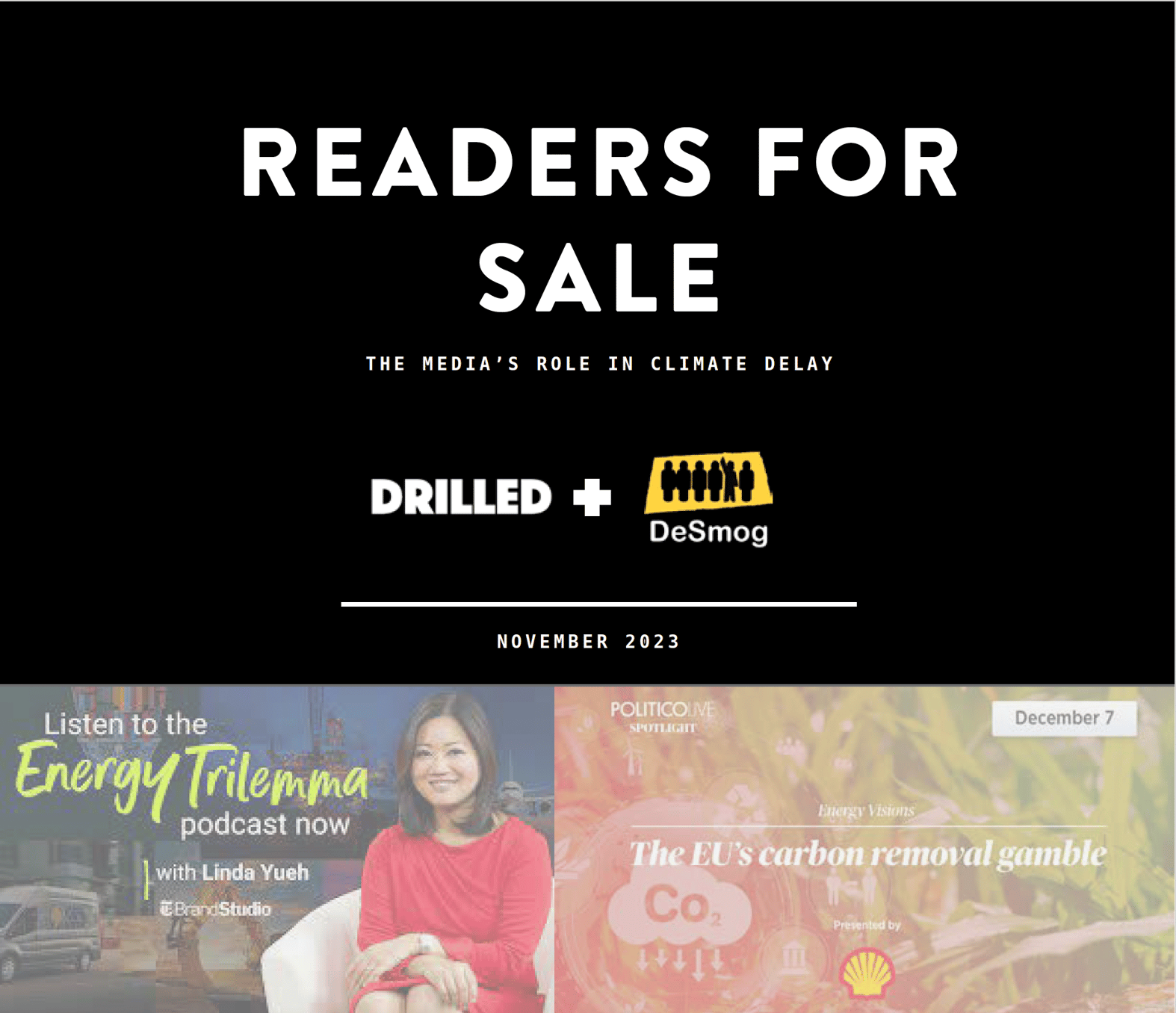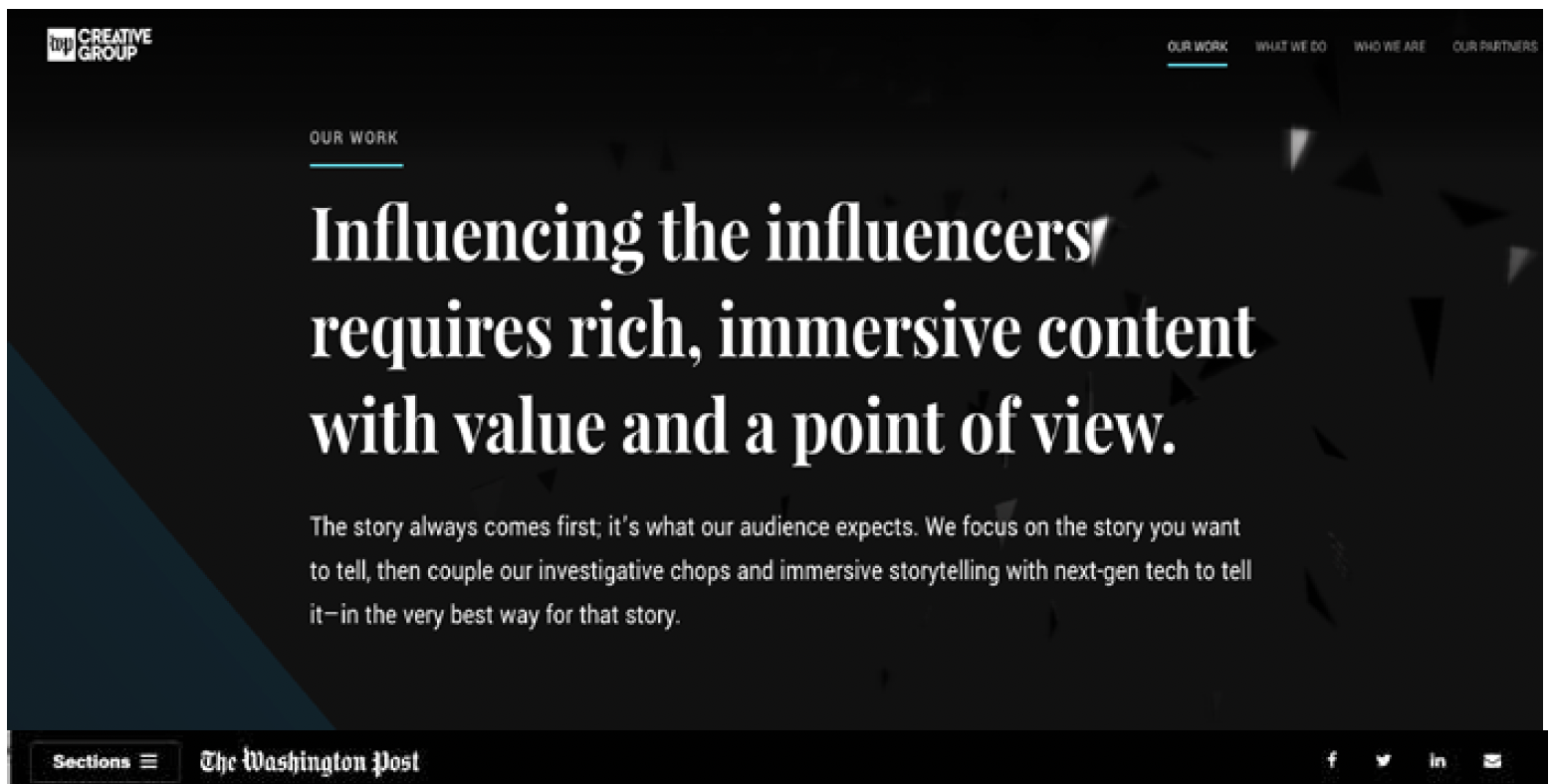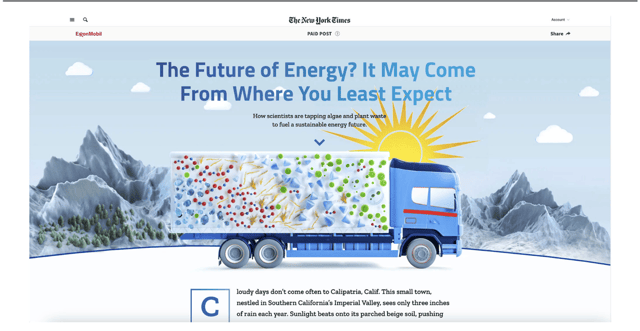
Download the Drilled + DeSmog report: “Readers for Sale”
The advertorial—an opinion piece paid for by a company and run alongside editorial content in newspapers and magazines—was invented by Mobil Oil’s long-time vice president of public affairs, Herbert Schmertz, with the help of The New York Times, in 1970. Schmertz had cut his teeth as a labor lawyer and political campaigner, and described his work for Mobil as “like a political campaign, but with no end.” He often disparaged his corporate colleagues’ approach to public relations, finding it too hands-off, too respectful of journalists, and far too timid. Instead, Schmertz encouraged corporate public relations executives to be bold about “getting around the press” to get their version of events to the public.
For Schmertz it was all about “influencing the influencers,” as he wrote in his book on the subject, Goodbye to the Low Profile. After testing the waters with an initial run, within a year Schmertz was running Mobil advertorials weekly in The New York Times, and branched out to multiple other outlets too. By the early 1990s, Mobil was running regular editorials in USA Today, The Economist, Time magazine and more than a dozen other publications. It had worked with The Los Angeles Times to gauge how opinion leaders felt about its advertorials and spent a significant amount of time and money to study whether or not its advertorial spend correlated to an editorial shift in the newspapers with which it worked. Whether it had or not is debatable; the fact that this was a stated goal of these programs, however, is notable, especially since they have only grown in scope and budget in the decades since.
What Mobil did wasn’t just shift where their ads turned up or the format they took, they fundamentally changed what they were advertising, from a line of products—gasoline, motor oil, and so forth—to a set of ideas about how the world should work, from the economy to the environment to the policies governing both. The rest of the industry quickly followed suit.
Today, almost every major media outlet offers not only the space for corporations to run advertorials of the sort Schmertz used to oversee back in the 1970s, but also a creative team ready to write those advertorials, and create graphics, videos, and podcasts to go with it. Taking a page from Schmertz’s book, The Washington Post Creative Group—the paper’s internal brand studio—describes how it goes about “influencing the influencers.”

In 2022 alone, ExxonMobil sponsored more than 300 editions of Washington Post newsletters. Throughout 2020 and 2021, it also ran a series of editorials for the American Petroleum Institute, the most powerful fossil fuel lobby in the U.S., including a multimedia piece highlighting fossil gas as a fundamental complement to renewable energy, and underscoring talking points about the intermittency of renewable energy that the paper’s reporters often debunk.
Media outlets have ventured into video, audio, and event offerings for corporate sponsors as well, and the fossil fuel industry has invested heavily in all three. In 2023, Reuters Plus, the company’s content studio, created a podcast for Aramco, the national oil company of Saudi Arabia, exploring the role oil companies will play in reaching net zero, with all eight episodes providing a platform for higher-ups at Aramco to peddle the company’s line. The New York Times beat them to the oil company podcast game, with its T Brand Studio creating “The Energy Trilemma,” a podcast about how high-emitting industries are decarbonizing, for BP in 2022. These offerings come at a higher cost than traditional ad buys, making them increasingly important to for-profit newsrooms facing a structural crisis in traditional revenue models driven by the rise of social media. Most media outlets point to a clear division between advertising and editorial, but multiple studies have found that such a wall does not exist in the minds of the public. Even when they are labelled as ads, advertorials (or “native ads”) are confused for “real” content according to multiple studies conducted in the past decade.
A 2018 Boston University study found that only one in 10 people recognized native advertising as advertising. A 2016 study conducted by Stanford University researchers found that 80 percent of students mistook native ads for reported stories.
To compile this report, Drilled and DeSmog analyzed hundreds of ad contracts, creative, and marketing materials for campaigns that ran between October 2020 and October 2023. What we found was major growth in the relationship Schmertz first started building back in the 1970s, and a media industry that repeatedly helps fossil fuel companies contradict the information climate reporters are sharing with the public. Over the past decade, the media has grown increasingly comfortable with—and increasingly financially reliant on—sponsored content. Our recommendation after spending several months digging into the details of these campaigns is that, particularly when it comes to issue ads that focus on politicized topics like climate, credible media outlets ought to let their reporters’ work be the final word.
In addition to this report, you can read a corresponding story produced in collaboration with The Intercept, The Nation, and DeSmog.




